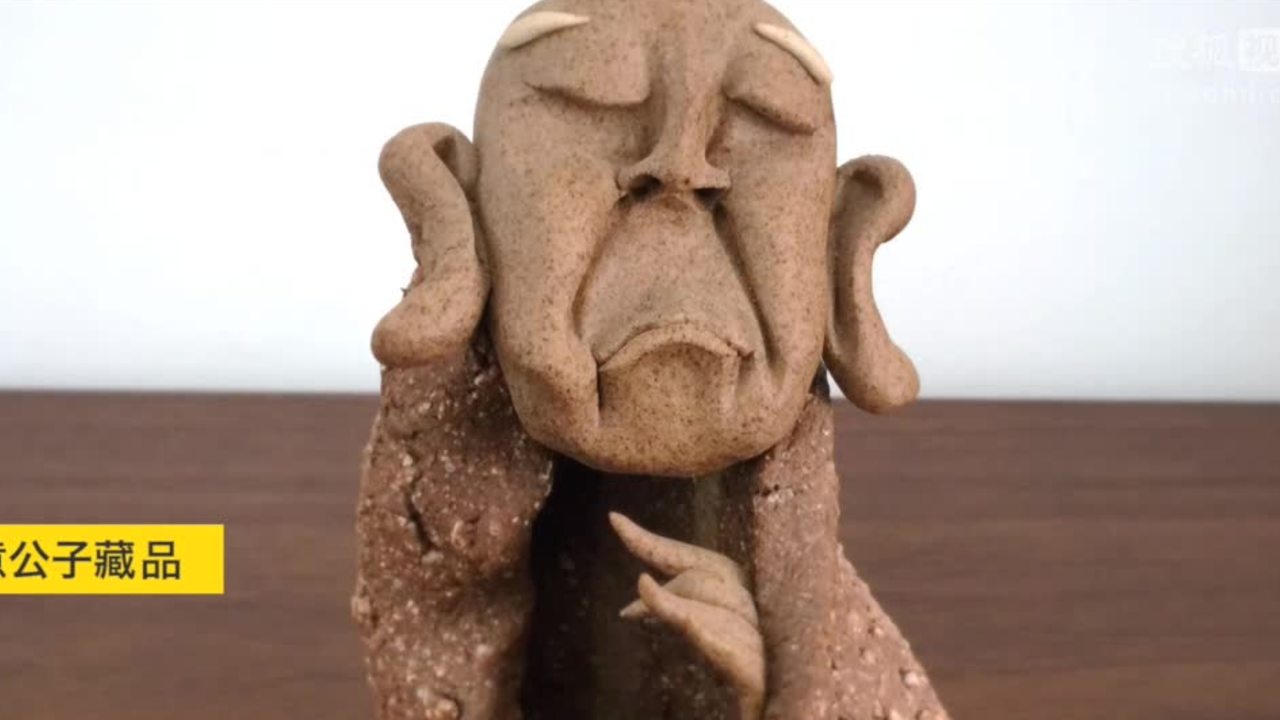
Chinese art, the painting, calligraphy, architecture, pottery, sculpture, bronzes, jade carving, and other decorative art forms produced in China over the centuries.

After Zheng Banqiao's big revelation, his days are numbered. He can't continue living in the Qing dynasty era of corruption and he eventually dies of sickness.

We analyze Zheng Banqiao's final painting. It's a depiction of bamboo being blown in the wind. It becomes a symbol of resistance against an unjust tide.
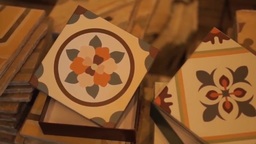
The director of a Xiamen antique store, The Goodone, has collected and preserved the flower tiles of the the city's old roads hoping one day they can be re-purposed into the design of the city.

In his effort to preserve the history of his city the director overcame many difficulties. In the end, it simply came down to his drive to preserve the past and love for sharing history with others, that lead him to persevere.
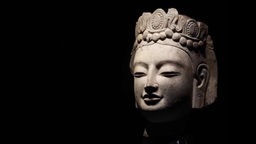
This episodes is a continuation of our Art series! We will be talking about Chinese sculpture in the next few videos. Sculpture in China has a long history and even predates most Western sculpture.
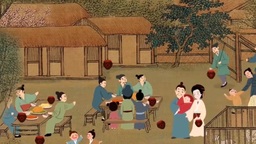
In the chaos and instability during Wei, Jin, and North-South dynasties people looked for hope and relief everywhere. When you have nothing how can you still have hope?

How and why did does an icon of Buddha stop refugees in their tracks? Is is because of the religious symbolism behind the icon or is there more to this classic, ethereal icon?
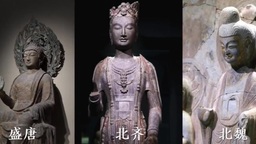
Let's compare the Beiqi Buddha to that of the Northern Wei! Who knew Buddha icons could represent the same ideology yet be so different visually. Take a look for yourself.

The expression that Buddha bears is one of deep peace, but where does this expression come from? What exactly is this so called, "deep peace" and how can we achieve this state of being?

Submission and acceptance of the world is something to respect. There is a phrase in Lao Tzu's "Dao De Jing", "the sage is ruthless, to them ten thousand things are but straw dogs". This phrase doesn't necessarily denounce sages or monks but rather reveres them for their ability to accept things as they are, which in it own right is a remarkable ability.

Living in the political instability of the Wei, Jin, North-South dynasties was in itself an experience of great suffering. How did people like Xiaoming survive? The Buddhist ideas of submission and acceptance may have played a part.

Our host introduces "500 strokes" the work of a Beijing artist. This piece incorporates 500 different single calligraphy brush strokes, each with it's own inspiration.
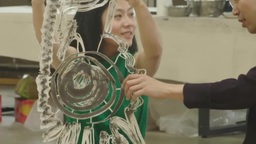
The artist explains his works. He describes how all of the paintings he does are really just free form and they come from the heart.
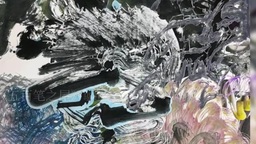
The artist based on the fact that young Japanese people who participated in his art project didn't take up most of the page when they were drawing, makes broad assumptions about Japanese society.
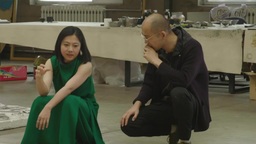
The host puts the artists work in perspective and the artist tells us that we can never really understand ourselves until we project ourselves outwardly.
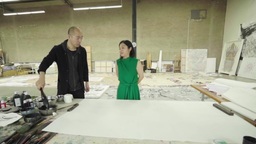
Our host can't wait to try painting and she goes about choosing her ink. The artist describes the process that needs to be unlearned in order for us to let out what's truly in our hearts. We should disregard our training and just paint.
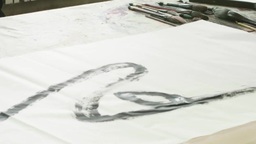
After the host finishes her painting the artist interprets in in relation to her life. He tells her that her life will move in one particular direction but She will have some difficulty right in the middle. In this way his work becomes a type of fortune telling.
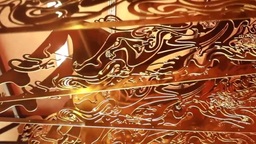
In the end our host gives us the message that we should try our best to change the things we can and not over think the things we can't change about ourselves.
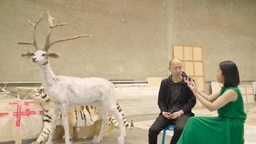
The artist describes how he draws inspiration from Chinese mythology, but he has his own flavor and interpretations.
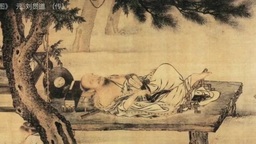
The artist talks about how in the future the things that we see as science they will see as legends.
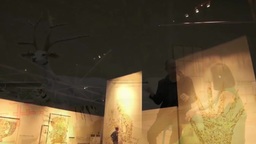
The artist shows that in our myths it is preordained that our advancements are all in service of returning to our mythological paradise.

In this episode, Yi Gongzi introduces the often overlooked museum specialty: ancient Chinese bronze ware.
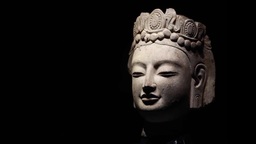
 Adv-Intermediate
Adv-Intermediate
China's first statues did not come from the popular Song or Tang dynasties. Yi Gongzi explains.

 Adv-Intermediate
Adv-Intermediate
Yi Gongzi describes the chaos and turmoil of the Wei, Jin, Southern and Northern Dynasties.
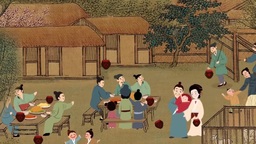
 Adv-Intermediate
Adv-Intermediate
Yi Gongzi tells the tale of Xiaoming and how he discovered an important find during the Northern Qi Dynasty.
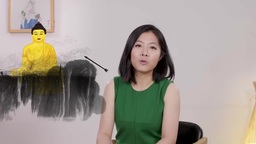
 Adv-Intermediate
Adv-Intermediate
Why does the statue of Buddha suddenly bring calmness to those who have experienced suffering?
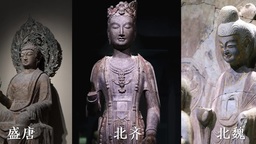
 Adv-Intermediate
Adv-Intermediate
How do the Buddha statues from the Northern Qi Dynasty compare with those from the Northern Wei Dynasty?
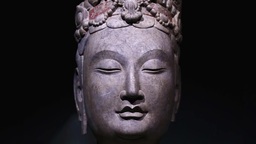
 Adv-Intermediate
Adv-Intermediate
Yi Gongzi explains how the face of the Buddha can show us what the deepest state of calmness and relaxation looks like.

 Adv-Intermediate
Adv-Intermediate
How do we reach a fully relaxed state of being?
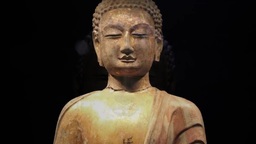
 Adv-Intermediate
Adv-Intermediate
Yi Gongzi explains the meaning of the Buddha's expression of complete acceptance.

 Adv-Intermediate
Adv-Intermediate
What is true and complete acceptance?

There is an underlying message of putting others first that is inherent in the concept of self-love.

A lot of what we do to take care of ourselves is based on the underlying belief that we're not good enough. That belief has to stop.
Are you sure you want to delete this comment? You will not be able to recover it.